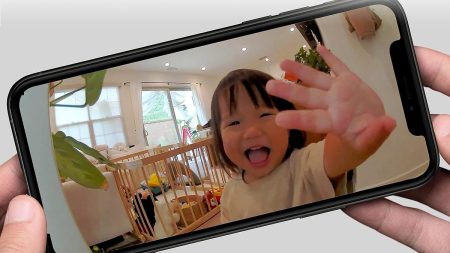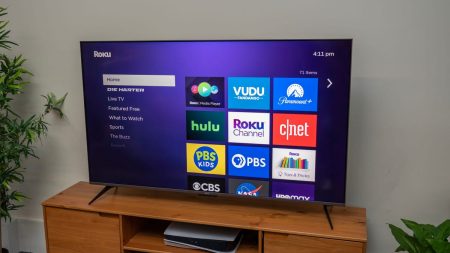T-Mobile and SpaceX Team Up to Tackle Wireless Dead Zones with Starlink
T-Mobile made a bold statement during Super Bowl LVII by unveiling its groundbreaking partnership with SpaceX’s Starlink satellite network. The commercial, aired during the first quarter of the big game, highlighted the arrival of T-Mobile Starlink, a beta service designed to eliminate wireless dead zones across the United States. This innovative collaboration marks a significant leap in bridging the gaps in cellular coverage, offering a solution that could transform how people stay connected, even in the most remote areas of the country.
What is T-Mobile Starlink?
T-Mobile Starlink is the result of a partnership between T-Mobile and SpaceX to provide satellite-based direct-to-cell service. This service aims to cover over 500,000 square miles of the U.S. that traditional cell towers cannot reach. What makes this offering even more remarkable is that it’s not exclusive to T-Mobile customers. Users of other major carriers, such as Verizon and AT&T, can also access this service. For now, the beta version is free until July, making it an attractive option for anyone looking to enhance their connectivity.
The initial phase of the service focuses on enabling text messaging, including wireless emergency alerts. While voice calls and data transmission are not yet available, T-Mobile has promised to expand these features in the future. The service works seamlessly with most modern smartphones, eliminating the need for special hardware. This means millions of users can take advantage of this technology without upgrading their devices.
A New Era of Connectivity: How T-Mobile Starlink Works
T-Mobile Starlink represents a massive technical breakthrough in wireless communication. By integrating SpaceX’s advanced Starlink V2 satellites, the service creates a space-based mobile network that automatically connects to users’ phones when traditional cellular networks are unavailable. This capability is a game-changer for anyone who travels to remote areas, lives in rural regions, or finds themselves in emergency situations where staying connected is crucial.
SpaceX has been deploying the next-generation Starlink V2 satellites from its facility in Redmond, Washington. Hundreds of these satellites are already in low-Earth orbit, paving the way for the widespread rollout of this service. T-Mobile’s CEO, Mike Sievert, called the initiative a "game changer for all wireless users," emphasizing its potential to redefine connectivity in the U.S.
The Bigger Picture: Bridging the Gap Between Satellites and Cell Phones
T-Mobile and SpaceX are not the only players in the satellite-based connectivity space. Apple’s latest iPhones, for instance, already offer emergency texting via satellite. Amazon’s Project Kuiper is working on a similar hybrid connectivity model in partnership with Verizon and other telecom companies. Meanwhile, other startups like AST SpaceMobile and Lynk Global are also exploring ways to merge satellite and cellular services.
This growing trend underscores the industry’s recognition of the need for more reliable and widespread connectivity. By combining the strengths of satellite technology and cellular networks, these collaborations aim to ensure that no one is left disconnected, regardless of their location.
Real-World Applications: T-Mobile Starlink in Action
The potential impact of T-Mobile Starlink extends beyond everyday convenience. It has already proven its value in emergency situations. Last month, T-Mobile activated the service in areas affected by catastrophic wildfires in Los Angeles, providing critical emergency texting capabilities to those in need. Similarly, the service was temporarily offered in regions hit by Hurricane Helene and Hurricane Milton, showcasing its ability to serve as a lifeline during disasters.
As the service continues to expand, it could play an even greater role in disaster response and recovery. For people living in remote or underserved areas, T-Mobile Starlink could mean the difference between being connected to emergency services and being completely cut off.
The Future of Connectivity: A New Frontier for Wireless Networks
The partnership between T-Mobile and SpaceX is just the beginning of a new frontier in wireless communication. By leveraging advanced satellite technology, the two companies are setting a precedent for how cellular networks can evolve to meet the needs of a hyper-connected world. While the service is still in its beta phase, the possibilities it presents are vast.
From enabling more reliable communication in emergency situations to providing connectivity in areas where traditional cell towers are impractical, T-Mobile Starlink has the potential to redefine what it means to stay connected. And with competitors like Apple, Amazon, and other telecom giants also exploring similar technologies, the race to deliver the most comprehensive and reliable connectivity solutions is heating up.
As the wireless industry continues to evolve, collaborations like T-Mobile Starlink remind us that the sky is no longer the limit when it comes to innovation. By combining the reach of satellites with the convenience of cellular networks, these partnerships are paving the way for a future where staying connected is not just a luxury but a universal reality.











